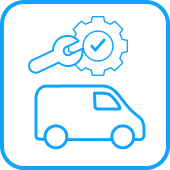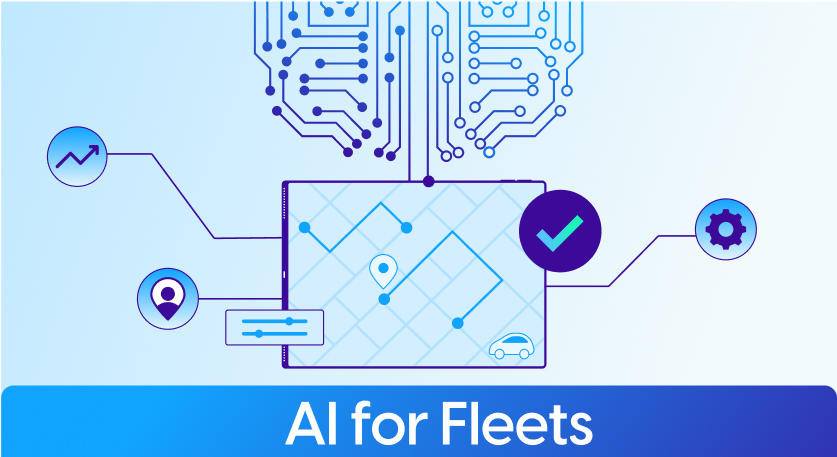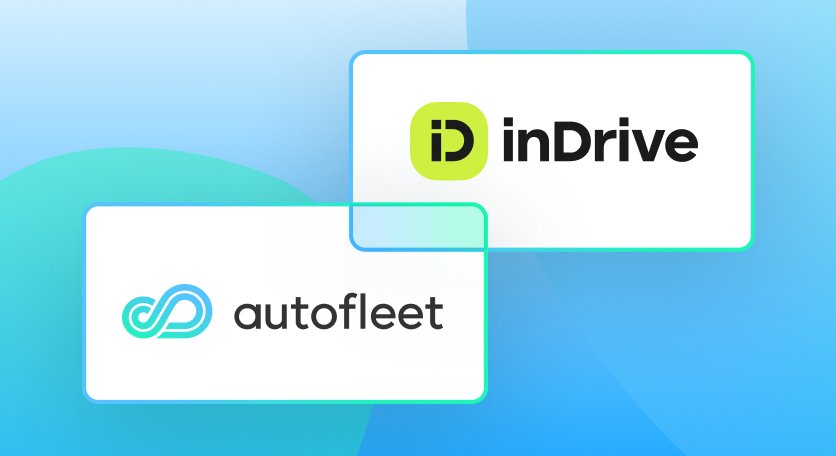







Five Ways to Optimize Fleet Management and Lower Your TCO
If you only have time for the headline version, here’s the TL;DR: Fleet optimization is a continuous, AI-assisted loop that recomputes the best way to run vehicles, people, and tasks in order to lower Total Cost of Ownership (TCO) by lifting utilization, cutting wasted miles, and preventing downtime before it happens.

In this article, we share five ways to optimize fleet management and lower TCO.
1. Maximize asset utilization before adding more vehicles

Any vehicle sitting idle is losing money, but often there’s no business case for downsizing due to fluctuating demand. A “shadow fleet” of surplus vehicles is pure cost, and this presents a challenge for fleet managers looking to reduce vehicle downtime.
Using an optimization engine allows you to unearth hidden inefficiencies and redistribute the workload in order to improve utilization. You can also consider implementing a shared vehicle pool to maximize utilization. An AI-powered fleet optimization system can then auto-assign assets based on location, state of charge or fuel, time windows, and expected dwell times. This ensures the right vehicles are sent out at the right times and avoids reassignments.
Fleet optimization also changes how you think about growth. Instead of adding vehicles to cover peak surges, use dynamic allocation that uses the existing fleet more efficiently. Fleets typically see a 25% uplift in utilization, which means you can delay planned vehicle purchases – that’s a direct CAPEX saving.
2. Continually optimize route planning for lower costs and happier customers

Without optimization, traffic or last-minute jobs can make things difficult for dispatchers and drivers. This has a ripple effect across a day, but pinpointing the source of the issue can be a challenge. This leads to extra time spent planning, missed jobs, penalties, and unhappy customers.
With routing handled by artificial intelligence, the fleet is dispatched based on historical data, the status of each vehicle, and the requirements of the job. This includes automatically choosing the most efficient routes, but crucially, the system will adapt as jobs and traffic change.
Optimized dispatch and routing also reduces TCO by reducing fuel consumption, unnecessary miles, and vehicle wear. The knock-on effect is better on-time performance, which leads to fewer service-level agreement (SLA) penalties and increased brand reputation.
3. Fix data fragmentation for more powerful automation

Your fleet optimization system is only as powerful as the data feeding it. Your telematics system might tell one story, while maintenance logs tell another. This not only makes it difficult to get a clear view of the fleet as a whole, but it can also limit your optimization efforts.
Consolidate telematics, fuel cards, maintenance, and timekeeping into a single operational data layer. Using APIs and webhooks to ingest fragmented data from multiple sources gives you a single source of truth from which to begin optimizing your fleet. This allows for more intelligent automation of job creation, driver assignments, policy enforcement, and notifications, and smarter decisions by fleet leaders
The result is not only savings from less admin work and fewer manual errors. It also gives business leaders and fleet managers deeper insight into the entire system from a single dashboard. This speeds up decision-making and reduces cycle times.
4. Protect uptime through preventative maintenance

When maintenance is reactive, unexpected downtime can increase. Often, this means fleets must carry a surplus of vehicles to ensure revenue isn’t lost during peak demand. Unscheduled maintenance takes the vehicle out of service for 2.5 times longer than planned service, and the costs scale even faster.
With automation and optimized fleet management, you can build regular maintenance, servicing, and cleaning tasks into your operation and ensure they take place during off-peak windows. Ensuring maintenance isn’t missed increases overall uptime while minimizing the impact on workload. This is an operational win, but that predictability also benefits the business’s bottom line.
With maintenance triggered by time or mileage, things become more predictable. The automated workflow can orchestrate tasks, parts, and drivers so vehicles continue earning rather than sitting idle. An optimized maintenance and servicing schedule lowers the preventable breakdown rate, downtime hours, and the mean time between failures.
5. Make EV TCO work with smart charging

On paper, electric vehicles save money over their internal combustion counterparts. However, when charging isn’t properly planned, it may end up leaving vehicles under-utilized and unable to take advantage of off-peak energy pricing.
Fleet optimization software can solve this problem by taking into account duty cycles, mileage, and forecasted demand. This builds charging into the day when it makes most sense and can schedule depot or public charging, prioritize off-peak tariffs, and prevent drivers from holding spare capacity “just in case.”
Additionally, using a fleet planning simulator can help estimate operational parameters, depot locations, and charging strategies that can significantly lower TCO.
When done correctly, EV utilization approaches (or exceeds) ICE utilization, while energy cost per mile drops significantly. Tracking EV vs ICE utilization, cost per kWh delivered, and the percent of off-peak vs peak charging gives a clear view of how your electrification strategy is reducing TCO.
These TCO gains don’t come from adding another dashboard — they come from building the conditions where optimization can run continuously.

Want to learn more about how Autofleet’s fleet management optimization platform could reduce your TCO?

Table of сontents
Stay up to date!

Stay Up To Date!



.png)







